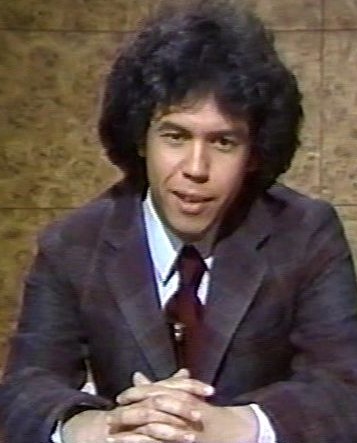What I love most about Gilbert Gottfried is that the persona he created is timeless and would seem appropriate in a Marx Brothers movie in the 1930s, animated into a Heckle and Jeckle cartoon in the 1940s, as a next-door neighbor on the Abbott & Costello TV show in the 1950s or on any comedy stage anywhere in America in 2014. Yet he really belongs to none of those things–or anything else. He immediately processes the context he’s in and gleefully deviates from everything, alienating everyone. He’s forever in search of the next punch bowl to piss in.
In the latest Lowbrow Reader comedy zine, Jay Ruttenberg has a tremendous essay about Gottfried. (The same edition also features two pages of the stand-up comic’s unusual drawings, which are reminiscent of the Early Serial Murderer school, and an excellent account of life somewhere alphabetically east of the D-List by the very funny Taylor Negron.) From the Gottfried piece:
“Gottfried is a club comic in an old-fashioned mold. He avoids the trendy comedy spots of downtown and Brooklyn, in all likelihood because they tend not to pay their performers. To see him in New York, one must brave Carolines on Broadway, a Times Square club that somehow even smells like 1992. Onstage, Gottfried stands at a hunch, nerdily engulfed in a size-too-large shirt. He squints his eyes as if to ward off a fart, a visual trademark as recognizable as Pryor’s gait or Rodney’s tie fidgets, and speaks in a matchless holler that could unnerve the dead. He devotes a surprising amount of his stage time to disparaging midgets. Blacks and Asians he can almost accept as human beings, the comedian reasons, but he must draw a line at midgets. He says that he would like nothing more than to approach a midget and punch him in his midget face. At this, Gottfried draws back his arm and punches the air in a manner suggesting that he has neither punched somebody himself nor witnessed a person getting punched, even in a movie or on television. With a grace reflecting his decades onstage, the comic makes a strangely endearing child molestation joke: He envies those fathers who manage to lure their wards into incestuous relations, as he cannot even convince his daughter to hold his hand while crossing the street. Gottfried concludes his set with material from his Dirty Jokes DVD and wraps up the evening by repeatedly yelling, ‘a little boy with cum in his mouth!’ The bulk of his set, however, is hardly blue. The comedian is a skilled impressionist, albeit mostly of long-deceased celebrities. Though not a prop comic, he ingeniously aids his impressions by placing strips of masking tape on his face—an elementary school cut-up gone pro. He does an extended bit about the sun and the moon that could kill in a third-grade classroom, as it did at Carolines.
Today’s younger comics, much like their indie-rock brethren, are mirrors of their audience: relatable figures in everyday clothes. They are slightly tweaked and often funny, but rarely dangerous. In contrast, nobody leaves a Gilbert Gottfried performance pleased that the comic thinks as they do. They leave believing that he is a deviant. He draws upon earlier eras of entertainment. He points to the ’80s, when he arose amidst walking cartoons like Pee-wee Herman and Andrew Dice Clay—both ultimately swallowed by their own creations—and loudmouths in colored leather. He is informed by the late ’70s, when he came of age surrounded by East Village punks—fellow Jewish geeks traumatized at home by Costanza parents and in the streets by a crumbling and forbidding city. Most of all, he evokes the fallen luminaries who ruled the Borscht Belt long before his time. It is their anarchic sensibility that Gottfried covets, reveres, and upholds. Of the fabled funny old men, he is the youngest.”

